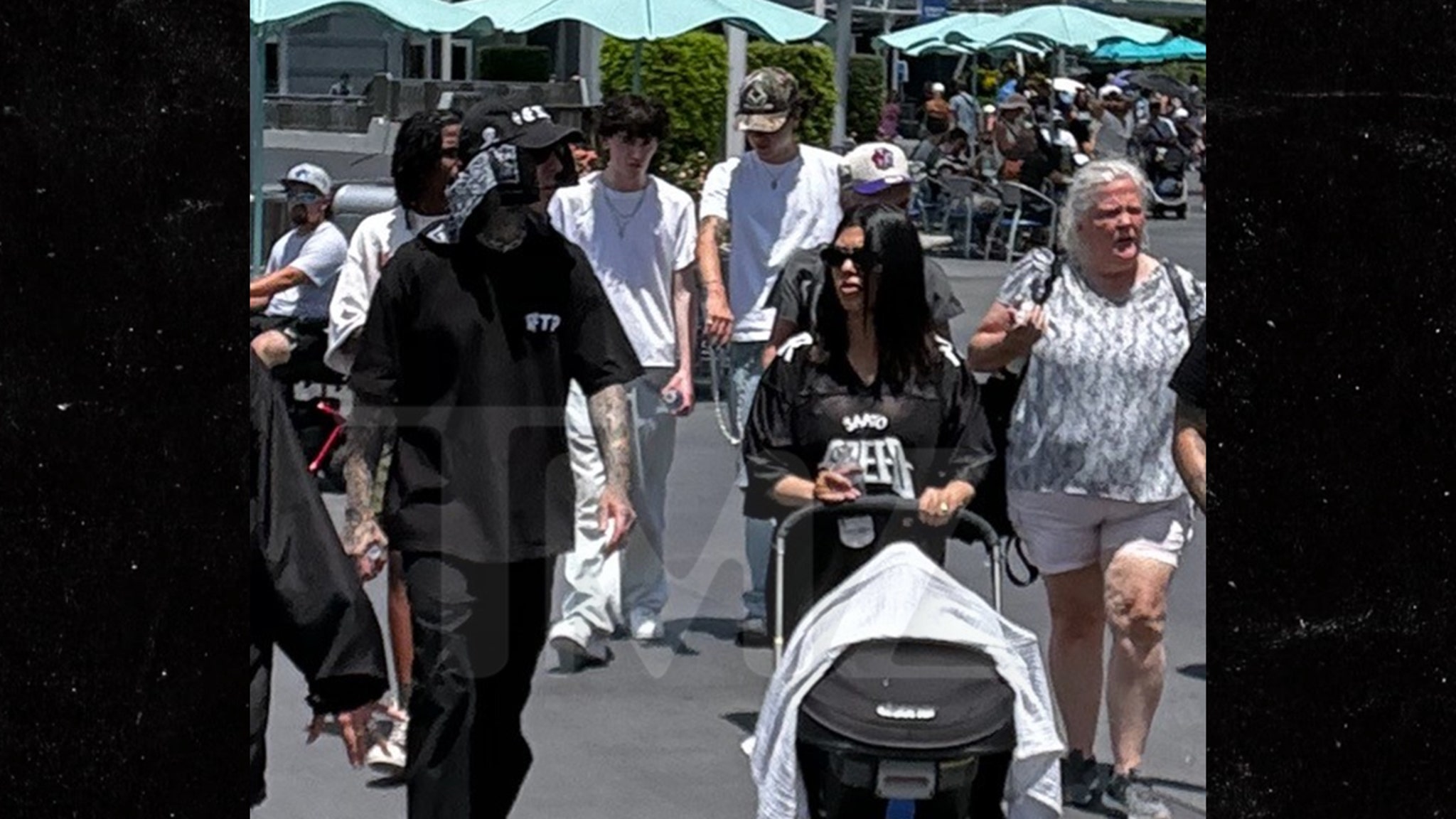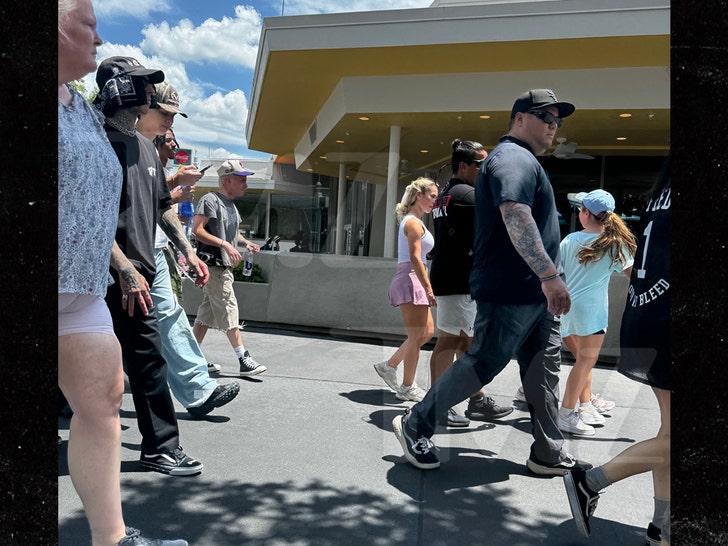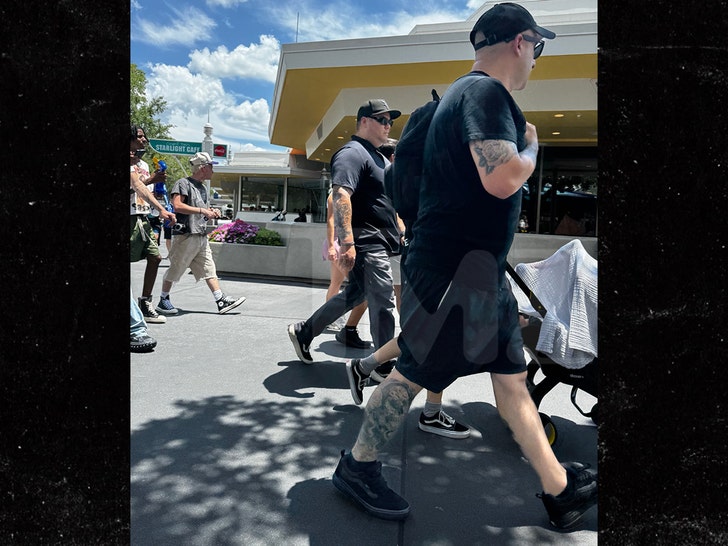Lifestyle
What's Making Us Happy: A guide to your weekend reading and listening

ATEEZ performs at the Sahara Tent during the 2024 Coachella Valley Music and Arts Festival in Indio, Calif., in April.
Frazer Harrison/Getty Images for Coachella
hide caption
toggle caption
Frazer Harrison/Getty Images for Coachella
This week, we girded ourselves for the possibility of bidding “Cheddar, Bye!” to Cheddar Bay. A famous travel destination for poor boys and pilgrims with families enjoyed a moment of grace. And when we asked ourselves: If you can’t antitrust Ticketmaster, who can you antitrust?
Here’s what NPR’s Pop Culture Happy Hour crew was paying attention to — and what you should check out this weekend.
Books by Megan Abbott


Megan Abbott writes domestic-meets-horror-thriller novels. I started with her short story “The Little Men” — it was exceptional and creepy and very vividly rendered. So I moved on to her other books, You Will Know Me, which is about a teen gymnast and some drama that happens to her family. And Give Me Your Hand, which is about two rival post-doc researchers and their shared history. These books are really immersive. They have creepy touches that I did not expect. There’s become sort of a formula to women’s thriller writing, and everything I’ve read so far from Megan Abbott just takes that formula and knocks it on it’s you-know-what. — Roxana Hadadi
“Bouncy (K-Hot Chilli Peppers)” by ATEEZ
ATEEZ(에이티즈) – ‘BOUNCY (K-HOT CHILLI PEPPERS)’ Official MV
YouTube
ATEEZ became the first K-pop boy group to perform at Coachella earlier this year. Aside from the fact that I find them all very pretty, their music is really fun and they’re very electric performers. They have this cyberpunk Western aesthetic that relates to the dystopian storyline that they’re unspooling — involving a world government that suppresses people’s emotions. But honestly, I think you should enjoy their music without knowing any of this. In the song “Bouncy (K-Hot Chilli Peppers),” cheongyang gochu is a type of Korean chili pepper that’s known for being way spicier — so basically they’re saying their vibe is a different level of spicy. It’s so silly and bombastic and catchy. I love it. — Mallory Yu
“Bird of a Feather” from Billie Eilish’s new album, Hit Me Hard and Soft
Billie Eilish – BIRDS OF A FEATHER (Official Lyric Video)
YouTube
Hit Me Hard and Soft is the new album by Billie Eilish. It is nice to hear an inventive, creative, ethereal pop record. It does synth pop really well — you can hear the woozy effervescence of it all. But this record goes a little harder and deeper and gets a little stranger. Songs take hairpin turns partway through and explore different sides of her sound. Billie Eilish is at such an interesting point in her career. She and her brother Finneas are coming off their second Oscar win for “What Was I Made For?” from Barbie. This album uses that song as a jumping off point. It’s still exploring that torch-ier side of her voice, but it’s taking it in some pop-ier directions at the same time. I’m going to keep coming back to this record all summer. — Stephen Thompson
Valley Heat podcast

Valley Heat is a scripted comedy podcast that pretends it is neither one of those things. Do not jump in to the most recent episodes. Start at the beginning because this thing builds. The less you know about it going in, the better. (The premise, a middle-aged white guy making a podcast about his neighborhood initially made me think: meh, maybe not for me.) Just know that it is bone dry, that it builds and builds and builds, that the cast of characters keeps growing and getting weirder. If you know the comedy team of Scharpling & Wurster think of this as a very West Coast version of that. — Glen Weldon
More recommendations from the Pop Culture Happy Hour newsletter
by Glen Weldon
Hazbin Hotel is an adult animated series about a demon who’s trying to reform the souls in Hell because … well, to go into that would take more time than I have in this blurb. There’s plenty of lore underpinning this show, is my point. Other things underpinning it: Showtunes! Queer characters! Stylish design! A great voice cast! And plenty of solid, well-earned, bounce-a-quarter-off ‘em jokes!
The Completely Made-Up Adventures of Dick Turpin is a very, very British historical comedy series about an infamous (in the U.K., at least) highwayman who’s something of a folk hero. Noel Fielding essentially plays himself as Turpin, and as you might imagine, the whole thing lives in that well-carved out liminal English-comedy space where the jokes are very silly but the delivery is very dry.
Brokeback Mountain. The Power of the Dog. Almodovar’s Strange Way of Life. The upcoming National Anthem. Queer cowboys have been around since the very first cowman made … “friends” with a farmer. It’s easy to forget that, so it’s nice that Orville Peck and Willie Nelson teamed up to remind us.
Beth Novey adapted the Pop Culture Happy Hour segment “What’s Making Us Happy” for the Web. If you like these suggestions, consider signing up for our newsletter to get recommendations every week. And listen to Pop Culture Happy Hour on Apple Podcasts and Spotify.

Lifestyle
'We Are Lady Parts' rocks with bracing honesty and nuance : Pop Culture Happy Hour

Lifestyle
Kourtney Kardashian, Travis Barker Spend Father's Day at Disney World

Kourtney Kardashian and Travis Barker spent their first Father’s Day since welcoming baby Rocky to the world at The Most Magical Place on Earth — Disney World!
Check out the pics obtained by TMZ of the couple at Magic Kingdom Park in Florida Sunday decked out in goth chic … Kourtney in an all-black sports jersey while Travis looked cool as ever in a t-shirt, a hat and a towel covering his head.

Of course, the Barker-Kardashians didn’t leave their little dude out of all the fun … ’cause Kourt’s seemingly pushing him in a stroller covered by a white towel to keep the harsh sun off him.

No Father’s Day would be complete without more of TB’s kids … like son Landon who’s walking with his dad in one pic, typing away on his phone
And, according to his daughter Alabama‘s Instagram story, it looks like she made the trek out to Florida too — though she wasn’t captured in these pics.

It’s another huge milestone for Kourt and Travis — who got married just over a year ago … the first Father’s Day with their new son, an especially meaningful one given how difficult a time the two had conceiving.
Remember … Kardashian revealed last month she actually underwent five rounds of IVF before giving it up and eventually conceived naturally — so, for a while it looked like the two wouldn’t have a baby at all.

Of course, Kourtney gave birth in November of last year — after emergency fetal surgery — and Rocky’s been happy and healthy by all accounts … so, tons to celebrate this year.

Anyhoo … Happy Blended Family Father’s Day, Travis!!!
Lifestyle
A Swiss museum will remove 5 paintings potentially looted by Nazis

A man walks past the entrance of the Kunsthaus Zurich on March 14, 2023. The museum is investigating the provenance of paintings over a possible connection to Nazi looting.
Arnd Wiegmann/AFP via Getty Images
hide caption
toggle caption
Arnd Wiegmann/AFP via Getty Images
A Swiss museum said five artworks will be removed from public view on June 20 as it collaborates with the owner of the artworks to investigate whether the works were looted by Nazis during World War II.
On longterm loan to the Kunsthaus Zurich museum from collection owner the Foundation E. G. Bührle (or Bührle Foundation) the paintings in question are Jardin de Monet à Giverny by Claude Monet, Vincent van Gogh’s The Old Tower, La route montante by Paul Gauguin, Gustave Courbet’s Portrait of the Sculptor Louis-Joseph and Georges-Henri Manuel by Henri de Toulouse-Lautrec.
In a statement issued on Friday on its website, the museum said the Bührle Foundation requested the removal of the artworks as it assesses their provenance. The renewed scrutiny comes as a result of the U.S. State Department’s latest best practices for handling Nazi-looted art, published in March. These expand the Washington Conference Principles on Nazi-Confiscated Art set forth in 1998.
“The Kunsthaus welcomes this stance, but very much regrets that, with respect to our visitors, five of the pictures are being removed from the Kunsthaus’ rooms by the current owner, the Bührle Foundation,” the museum said. “The Bührle Foundation is acting comprehensibly and correctly in accordance with the agreement with the city of Zurich and in accordance with the provisions of the permanent loan agreement.”
“The Foundation strives to find a fair and equitable solution with the legal successors of the former owners for these works, following best practices,” said a statement in German from the Bührle Foundation.
The foundation said it is also conducting a separate investigation of a sixth work currently on display at Kunsthaus Zurich, Edouard Manet’s La Sultane.
“The work does not fall within the scope of [the U.S. State Department’s] “best practices” due to the sales processes, but is classified as a case that must be taken into account separately,” the foundation said in its statement. “Due to the overall historical circumstances, the foundation is prepared to provide symbolic compensation.”
Focused on French Impressionist and Post-Impressionist artworks, the Emil Bührle Collection, managed by the Bührle Foundation, is a core part of Kunsthaus Zurich’s offerings.
According to the museum website, the foundation’s loan of around 200 artworks “is permanent and can only be terminated with many years’ notice, for the first time at the end of 2034.”
Twenty-five countries, including Switzerland, have so far endorsed the expanded U.S. State Department guidelines for dealing with Nazi-confiscated art. The new agreement follows the 1998 Washington Conference Principles, which focused on providing restitution to the families of the original owners for treasures that were either stolen or forcibly sold by Nazis.
“Restitution should be to all lawful beneficiaries and heirs in accordance with a country’s usual inheritance law,” the March 2024 guidelines state. “All pre-War owners who are identified through provenance research or their heirs should be proactively sought by the current possessors for the purpose of restitution.”

Hundreds of thousands of paintings and millions of books as well as cultural and religious artifacts were stolen from Jewish owners by Nazis in the Holocaust. Many have still not been returned to their rightful owners.
According to a recent report by the World Jewish Restitution Organization and the Conference on Jewish Material Claims Against Germany, countries such as Russia, Romania, Spain, Denmark and Turkey have made scant progress in trying to restore looted artworks to the original owners or heirs over the past quarter of a century.
Although Switzerland remained neutral during World War II, it maintained strong economic ties to Nazi Germany and its allies.
“Confiscated artworks were often saved for private Nazi and German collections, while some pieces were sold to buyers through neutral countries like Switzerland to raise capital for purchasing additional art pieces and to purchase materials for the Nazi war machine,” states an article about Nazi looted art from the National Archives’ Holocaust Records Preservation Project. “Additionally, Switzerland offered a large market to sell off ‘degenerate art.’ “
-

 News1 week ago
News1 week agoIsrael used a U.S.-made bomb in a deadly U.N. school strike in Gaza
-

 World1 week ago
World1 week agoRussia-Ukraine war: List of key events, day 833
-

 Politics1 week ago
Politics1 week agoGeorge Clooney called White House to complain about Biden’s criticism of ICC and defend wife’s work: report
-

 Politics1 week ago
Politics1 week agoNewson, Dem leaders try to negotiate Prop 47 reform off California ballots, as GOP wants to let voters decide
-

 World1 week ago
World1 week agoDozens killed near Sudan’s capital as UN warns of soaring displacement
-

 World1 week ago
World1 week agoVideo: U.S. Official Responds to Israeli Strike on a U.N. School in Gaza
-

 World1 week ago
World1 week ago‘Bloody policies’: Bodies of 11 refugees and migrants recovered off Libya
-

 Politics1 week ago
Politics1 week agoEmbattled Biden border order loaded with loopholes 'to drive a truck through': critics















